Joe Cecil
Perhaps PTLMs Should Go to School -- A Task to Assess Open Book and Closed Book QA
Oct 04, 2021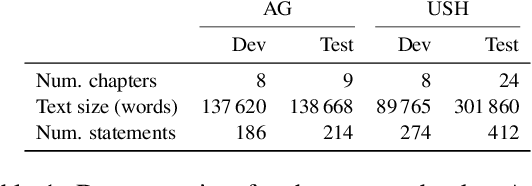
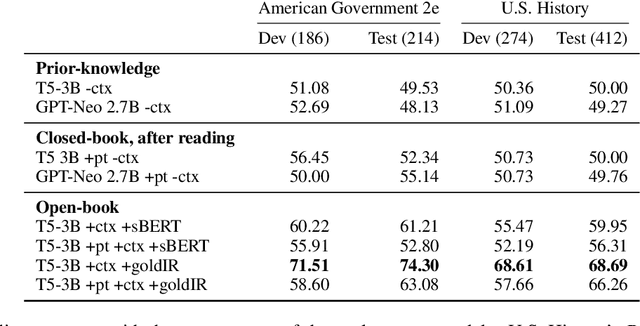
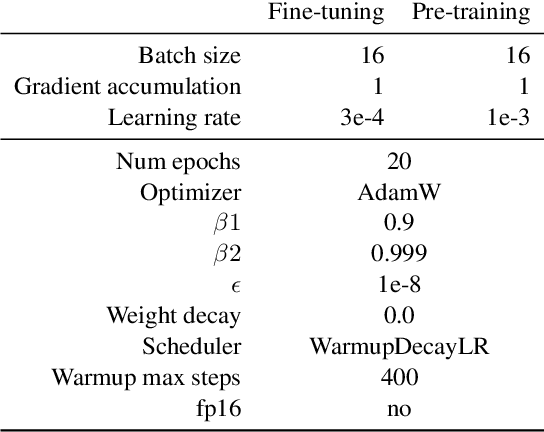
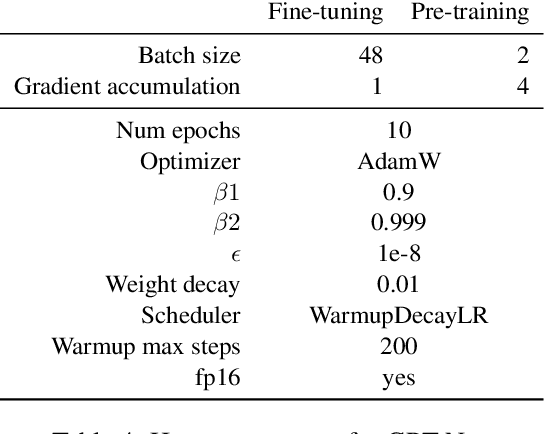
Abstract:Our goal is to deliver a new task and leaderboard to stimulate research on question answering and pre-trained language models (PTLMs) to understand a significant instructional document, e.g., an introductory college textbook or a manual. PTLMs have shown great success in many question-answering tasks, given significant supervised training, but much less so in zero-shot settings. We propose a new task that includes two college-level introductory texts in the social sciences (American Government 2e) and humanities (U.S. History), hundreds of true/false statements based on review questions written by the textbook authors, validation/development tests based on the first eight chapters of the textbooks, blind tests based on the remaining textbook chapters, and baseline results given state-of-the-art PTLMs. Since the questions are balanced, random performance should be ~50%. T5, fine-tuned with BoolQ achieves the same performance, suggesting that the textbook's content is not pre-represented in the PTLM. Taking the exam closed book, but having read the textbook (i.e., adding the textbook to T5's pre-training), yields at best minor improvement (56%), suggesting that the PTLM may not have "understood" the textbook (or perhaps misunderstood the questions). Performance is better (~60%) when the exam is taken open-book (i.e., allowing the machine to automatically retrieve a paragraph and use it to answer the question).
A Grounded Approach to Modeling Generic Knowledge Acquisition
May 07, 2021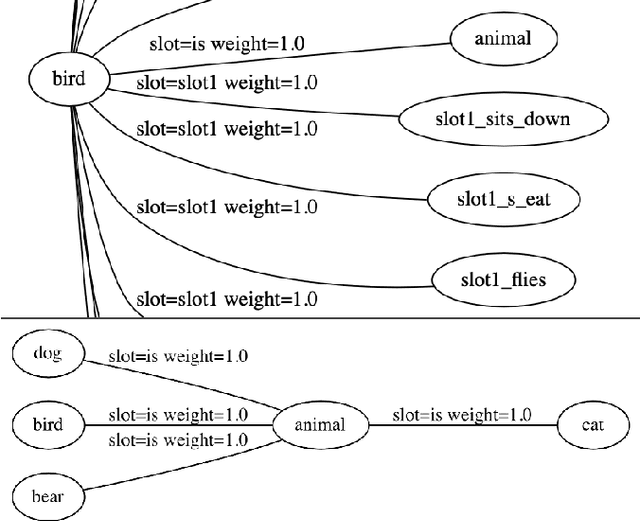
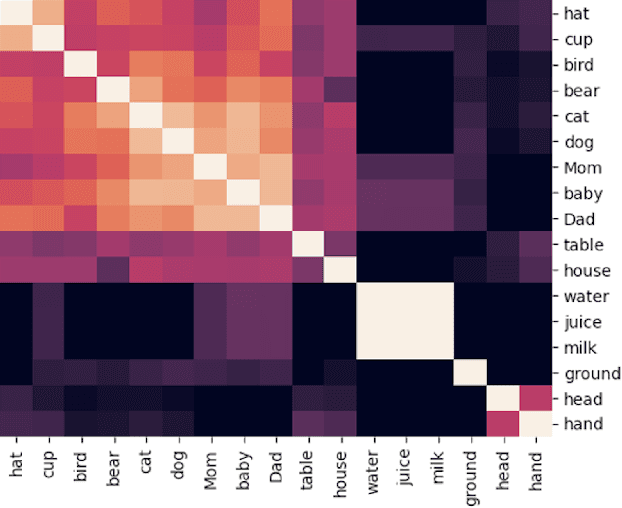

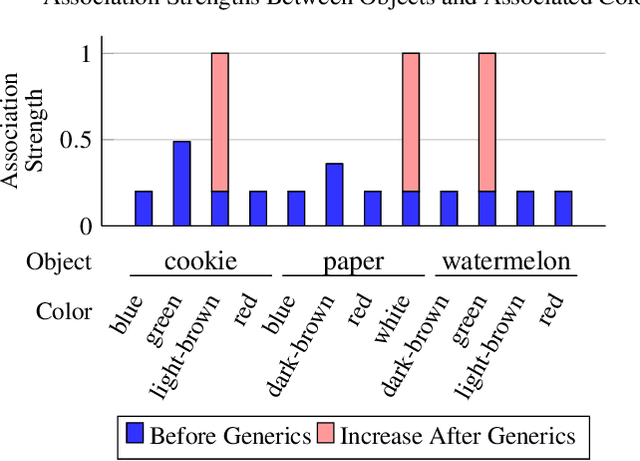
Abstract:We introduce and implement a cognitively plausible model for learning from generic language, statements that express generalizations about members of a category and are an important aspect of concept development in language acquisition (Carlson & Pelletier, 1995; Gelman, 2009). We extend a computational framework designed to model grounded language acquisition by introducing the concept network. This new layer of abstraction enables the system to encode knowledge learned from generic statements and represent the associations between concepts learned by the system. Through three tasks that utilize the concept network, we demonstrate that our extensions to ADAM can acquire generic information and provide an example of how ADAM can be used to model language acquisition.
ADAM: A Sandbox for Implementing Language Learning
May 05, 2021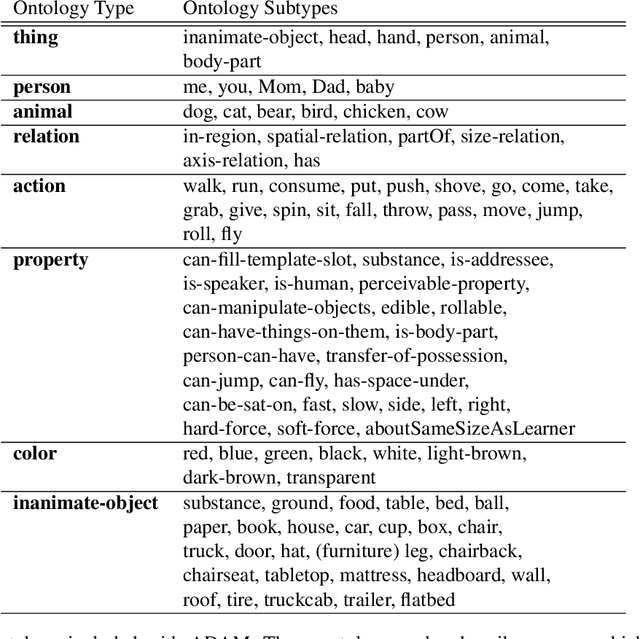

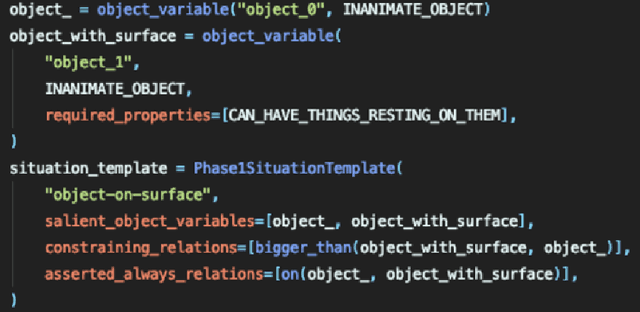
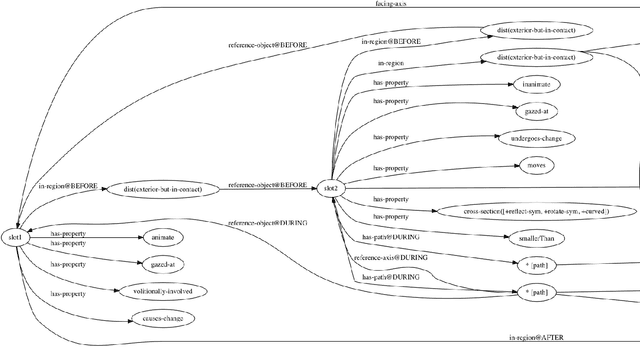
Abstract:We present ADAM, a software system for designing and running child language learning experiments in Python. The system uses a virtual world to simulate a grounded language acquisition process in which the language learner utilizes cognitively plausible learning algorithms to form perceptual and linguistic representations of the observed world. The modular nature of ADAM makes it easy to design and test different language learning curricula as well as learning algorithms. In this report, we describe the architecture of the ADAM system in detail, and illustrate its components with examples. We provide our code.
 Add to Chrome
Add to Chrome Add to Firefox
Add to Firefox Add to Edge
Add to Edge